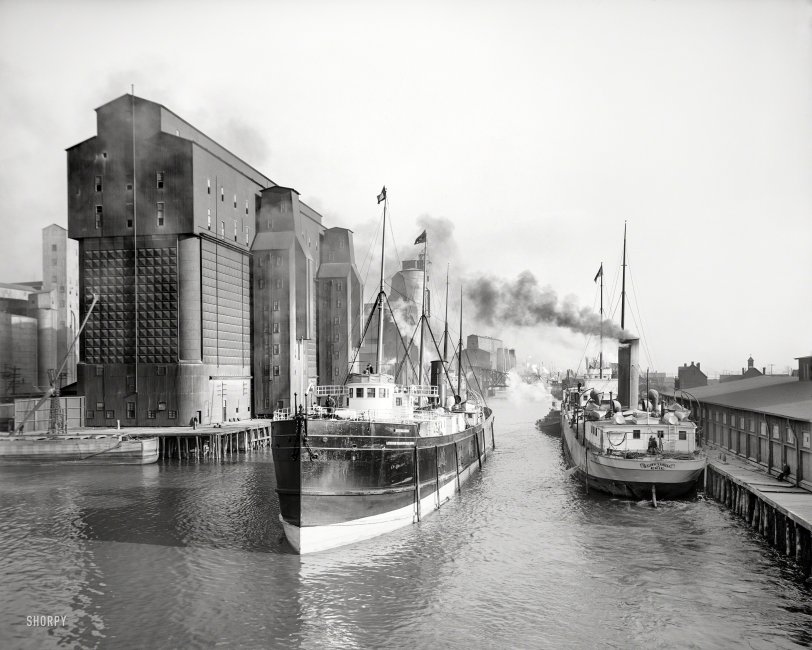


Framed or unframed, desk size to sofa size, printed by us in Arizona and Alabama since 2007. Explore now.
Shorpy is funded by you. Patreon contributors get an ad-free experience.
Learn more.

- Exclusive pump
- Details, Details
- What's that building to the left of the tower?
- Coal Barges
- Bromo-Seltzer
- Inner harbor
- The Basin
- What a headache!
- Giant stepladder?
- Baldwin 62303
- Baldwin VO-1000
- Cold
- No expense spared
- Tough Guys
- Lost in Toyland
- And without gloves
- If I were a blindfolded time traveler
- Smoke Consumer Also Cooks
- Oh that stove!
- Possibly still there?
- What?!?
- $100 Reward
- Freeze Frame
- Texas Flyer wanted
- Just a Year Too Soon
- WWII -- Replacing men with women at the railroad crossing.
- Yes, Icing
- You kids drive me nuts!
- NOT An Easy Job
- I wonder
Print Emporium
Flour Power: 1911

The Buffalo River, city ship canal and flour mill elevators circa 1911. "A busy section of the canal -- Buffalo, N.Y." 8x10 inch glass negative. View full size.
The Blue Peter
The flag on the foremast of the ship on the left is the flag for the letter "P". When it was raised in port it indicated that the ship would be sailing soon and all passengers and crew should make haste to get on board. The flag was called the Blue Peter as it had a white square in the center of a blue flag.
Freighters' Fate
Toward the end of the 19th century and into the 20th a handful of Eastern railroads established steamboat lines as extensions of their services that carried freight westward and mostly grain eastward.
The Bethlehem, launched 29 February 1888 as the E. P. Wilbur by the Globe Iron Works at Cleveland, ran for the Lehigh Valley Transit Company, a subsidiary of that railroad.
The Schuylkill, launched 2 July 1892 also by Globe, ran for the Erie & Western Transportation Company, a subsidiary of the Pennsylvania Railroad, to connect with the Northern Pacific at Duluth.
The railroads were forced to divest these steamship lines by the Panama Canal Act of 1912. Aside from their builder and similar service, both vessels shared a common experience of lake package freighters upon the advent of the United States' entry into the Great War: Requisition or outright sale for wartime service on saltwater. The Bethlehem was cut in half at Ashtabula in 1917 and reassembled at Montreal and slightly enlarged. It survived the war and entered British registry in 1921, and was dismantled two years later.
The Schuylkill was halved at Buffalo and reassembled at Quebec. On its first voyage on saltwater the Schuylkill was torpedoed by German submarine U-39 on its delivery voyage to Greece, 21 November 1917, becoming one of the 157 vessels sunk by the U-39 during the war, second largest total among Germany's U-boat fleet.
























On Shorpy:
Today’s Top 5